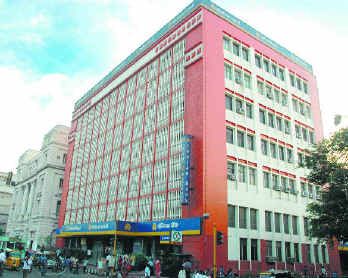INDIA :

On Teachers’ Day, AMP held the felicitation ceremony for the 8th AMP National Awards for Excellence in Education 2024. The event took place at an impressive function in Ravindra Bhawan, Raj Bhavan Road, Bhopal, Madhya Pradesh. It was attended by award winners, invited guests, AMP members, volunteers, and the academic community. Some awardees who could not travel to Bhopal participated virtually, and many others joined through social media platforms.
The Chief Guest for the event was Shri Digvijay Singh, Former Chief Minister of Madhya Pradesh and Member of Rajya Sabha. He praised the role of teachers and commended AMP’s initiative of uniting Muslim professionals to give back to society. Shri Singh emphasized the importance of prioritizing education and healthcare for the progress of the country. He also highlighted the need for Muslims to pursue professional education to foster community advancement.
In his keynote address, Prof. Furqan Qamar, Former Vice Chancellor of the University of Rajasthan and Central University of Himachal Pradesh, underscored the necessity of increasing participation in higher education. He stressed the importance of public investment in education to make it accessible to marginalized groups, such as rural communities, women, and landless laborers, who often lack opportunities for higher education.
Maulana Syed Mushtaq Ali Nadvi, Shahar Qazi of Bhopal and the Presiding Speaker at the event, quoted Allama Iqbal, saying, “The soil of Hindustan is very fertile and amenable to good works from its citizens.” He emphasized the special status of teachers in Islam, reminding the audience that according to a Hadith of Prophet Muhammad (PBUH), a good teacher can attain a rank close to that of the Prophets.
The winners of the AMP National Awards were selected by a jury of 14 distinguished educationists and academicians from thousands of nominations submitted across India. These awards were presented in seven categories:
- Primary and Secondary Teachers
- College and University Teachers
- Principals/Head of Institutions
- Islamic Education (Arabic/Fiqh/Islamic Studies)
- Educational Institutions
- Lifetime Awards
- Late Ibrahim Quereshi Memorial Award
The Late Ibrahim Quereshi Memorial Award was bestowed upon Prof. Furqan Qamar in recognition of his exceptional service in the field of education.
The Lifetime Achievement Awards were given to the following esteemed educators:
- Hazrat Maulana Sayyed Muhammad Aqil, Shaykhul Hadith, Mazahir Uloom, Saharanpur, Uttar Pradesh
- Jamaluddin Ahmad Khan, Ex-Lecturer, Halim Muslim Inter College, Kanpur, Uttar Pradesh
- Sharifa A. Azeez, Correspondent, Crescent Matriculation Higher Secondary School, Chennai, Tamil Nadu
- Sheila Lawrence, Former Headmistress, Lucknow Christian College, Lucknow, Uttar Pradesh
On this occasion 78 teachers were honored with Special Jury Awards in the categories of Primary & Secondary Education, Higher Education, and Heads of Institutions. Furthermore, 50 “My Favourite Teacher” Awards were presented to teachers who were voted by students and parents from across the country.
One of the Guests of Honour, Dr. Usha Khare, National Teacher Awardee (Govt. of India) and State Teacher Awardee (Govt. of M.P.), recounted her efforts to promote education for girls in impoverished neighborhoods. Dr. Khare, who recently retired as the Principal of Jahangirabad Girls Government School in Bhopal, shared her inspiring story of how she encouraged parents to send their daughters to school. She also mentioned her act of philanthropy, where she donated her entire prize money of Rs. 25 lakhs, won on the television show Kaun Banega Crorepati, to the school. Upon her retirement, she left assets worth Rs. 1.5 crores for the institution.
Other notable Guests of Honour included Mr. Arif Masood, MLA – Bhopal Central; Mr. Atif Arif Aqueel, MLA – Bhopal North; and Mr. Wazir Ansari, IPS (Retired), Former DGP of Chhattisgarh. Each guest lauded AMP’s tremendous achievements in the fields of education and employment over the past 17 years. They also praised the event’s organizing team and the jury for their thorough selection process and the professional execution of the felicitation program.
Farooq Siddiqui, Head of AMP’s National Coordination Team, hosted the event, reflecting on AMP’s humble beginnings and its expansion to over 200 cities across India. He also noted AMP’s growing global presence, with volunteers in many countries around the world.
The guests were welcomed by Kaleem Akhtar, Zonal Head for Central India, AMP NGO Connect. Sajid Qureshi, Acting President of the Late Ibrahim Qureshi Memorial Study Circle in Bhopal, expressed his gratitude to AMP for the opportunity to support such a prestigious event. Rafat Iqbal Farooqi, State Head of AMP Madhya Pradesh, extended a vote of thanks to the guests, awardees, and the entire AMP Madhya Pradesh State and Bhopal Chapter teams for their hard work in making the event a resounding success.
The event was a testament to the immense contributions made by teachers and educators, who continue to shape the future of the country through their dedication to education and their students.
Click hare for more details and the list awardees.
source: http://www.muslimmirror.com / Muslim Mirror / Home> Education> Positive Story / by Muslim Mirror Network / September 07th, 2024


















